Business thinking for Rural Facilitators
AIMS OF CHAPTER/ABSTRACT
In this chapter, the rural facilitators can find the theoretical background for important questions like how to fund a business idea, how to form this idea into a functional business, and how to plan this business in detail. The main topics of the chapter are the introduction of the main business skills, strategic thinking, and planning, Ikigai concept in business, Business model Canvas, and Business Plan.
KEYWORDS
business, strategy, strategic thinking, strategy analysis, ikigai concept business model canvas, business plan.
LEARNING OBJECTIVES
Business-oriented thinking is an important part of every successful project and one of the main leadership skills. It is also becoming a key factor for the survival of small-scale farming in this turbulent, increasingly complex global economy. Farmers and rural facilitators have to see their activities as a business and to earn profit. Of course, a passion for what they do is a crucial part of why they are doing it. Entrepreneurs in the rural area operate in a complex and dynamic environment and they need to see the wider circumstances – an external environment without their direct influence, microenvironment (farmers, suppliers, traders, transporters, customers, etc.).
The main learning objectives of this chapter are:
- To get to know an overview of the main business skills,
- To explore the ideas of strategic thinking and planning,
- To be introduced to the Ikigai concept in business,
- To learn how to use Business model canvas,
- To explore the basics of the business plan.
Introduction of the main business skills
Business planning (including strategic thinking, ability to plan, identifying resources, etc.) was pointed out as one of the most important knowledge and competencies in desk research including all project countries. To include a chapter about business knowledge was also confirmed by the results of the competence survey (please see more of the Competence Catalog). Using the strategic management techniques can be a source of extra knowledge for farmers through the facilitators and it can boost their effectiveness and chance of being successful on the market. Business-oriented thinking is necessary for each entrepreneur that produces for the market no matter what field of economy it is. The main characteristic of a successful entrepreneur is creativity, good leadership, ability to seek new opportunities and innovate and expand his business. This part will introduce the most important business skills and point out the connection between these skills and a successful business.
For a rural facilitator, the new “way of life” needs to be clearly defined. It contains many pros and cons that need to be taken into consideration before the business is established.
“I'm my own boss”
To be an entrepreneur means, on one hand, to be independent and free but on the other hand, also facing risks alone, work under pressure, and responsibility for the outcomes – good or bad. A rural facilitator as an independent entrepreneur has the freedom in making decisions about the business and also control over what has to be done, when and in what order. He/she also often works alone in solitude and needs to cover a wide range of managerial and “day to day” tasks. The uncertainty is a part of his/her life, the profit generation is completely in his/her own hands and he/she risks personal assets and security. The level of responsibility and risk failure is much higher than the employee’s status. He/she also often works long and irregular hours to meet demands and fulfil all tasks, sometimes it is very difficult to distinguish between personal and business life. Social status is linked to the success of the business.
All these challenging characteristics of their business demand several important business skills. A successful entrepreneur needs to be initiative, ambitious, focused on problem-solving, creative in thinking, able to take risks, flexible and adaptable, have interpersonal abilities, networking and readiness to learn.
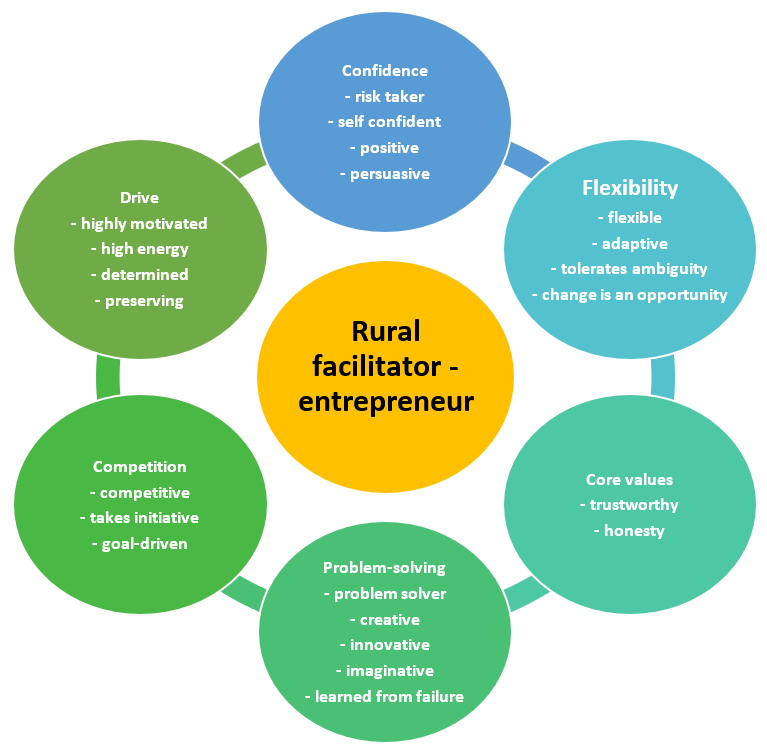 Figure 11 Main business skills of a rural facilitator. Source: own creation based on the project research results and Jones and Rowley, 2011.
Figure 11 Main business skills of a rural facilitator. Source: own creation based on the project research results and Jones and Rowley, 2011.
Rural facilitators need to understand marketing, risk management, financial management, and the labour market. To be successful and able to establish a good business connection he/she needs to respect core values such as trustworthiness, truthfulness, respect, responsibility, fairness, caring, and social responsibility.
Some of the above-mentioned skills and characteristics might be trained, but some of them need to be a vital part of a given person. The set of characteristics often determines the final business.
Strategic thinking and planning
Rural entrepreneurs do not exist and work alone. They operate in a complex and dynamic environment including farmers, suppliers, transporters, intermediates, customers but also the external environment – political, economic, social, and technological sphere. This chapter will help you with understanding your position in this complex system and the ability to find an opportunity on the market. It includes a basic analysis of the external and internal environment and demonstrates how to generate possible strategies for your business.
A strategy is an overall long-term orientation for the business. At the very beginning, it sets out the goals that rural facilitators want to achieve in his/her business and offers the ways how to achieve these goals. Strategic management is the process of planning the strategy, implementing it, monitoring the outcomes, and adjusting the strategy over time as conditions change.
Above that, strategic management is also a way of thinking. Strategic rural facilitators are forward-thinking, proactive, and focused on where they are going and how they intend to get there in the long term. It is very important not to surrender to the daily pressure of the operative tasks and also plan in the long-term, with a wider vision and don´t be afraid to spend time searching for innovation and news on the market.
Rural facilitators are a part of the complex environment and they are facing the condition of the market every day. Figure 14 shows the levels of the environment and it offers a selection of the strategic analysis which can be used to evaluate the market conditions. How to use these analyses will be elaborated on in the training materials. 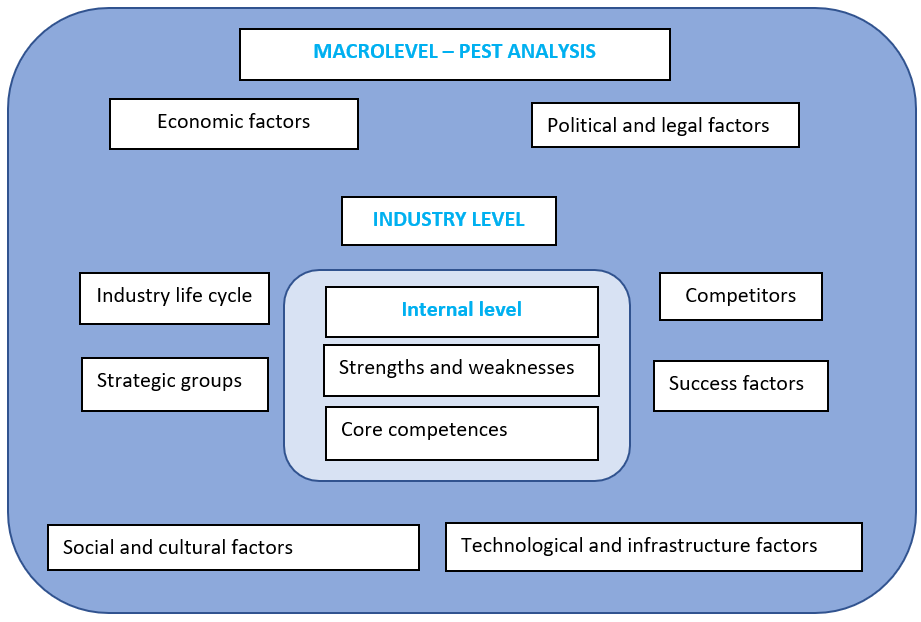
Figure 12 SEQ Figure \* ARABIC 12 Environment of rural facilitator. Source: Hill, et.al., 2020.
The decisions made by the rural facilitator should be based on the results of these analyses. He/she needs to seize every opportunity and make the best of it, try to make the whole system work in their favour, and stay focused on their purpose. This thinking brings much more profit and targeted goals than “learning by doing”. Moreover, with the knowledge of these analyses, the facilitator can help farmers to establish a new farmer´s shop that would be targeted for the right customers, help the farmers also use strategic thinking in the decisions where to orient their interest in their production. The ability to overview the whole ecosystem is an important skill for the facilitator and can help to prevent many wrong decisions.
The strategic management processes
Strategic management consists of strategic planning, strategic implementation, and strategic control. Strategic management deals with broad issues and opportunities affecting the rural facilitator business. It is not the same as day-to-day management of the business that deals with the immediate operational issues of the business.
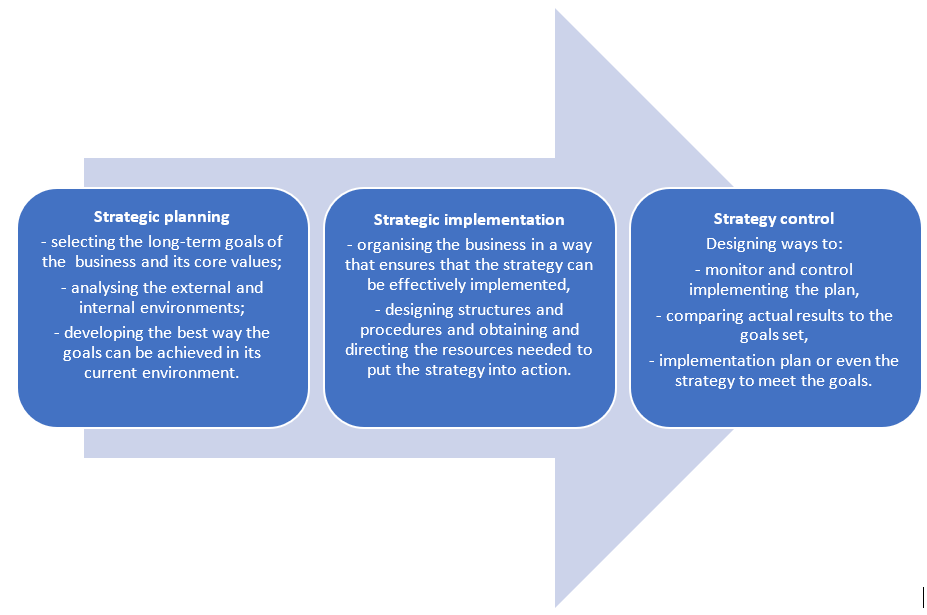
Figure 13 Strategic management process. Source: Hill and Jones, 2020.
Many risks in the market can be avoided by strategic thinking. Market-related risks can relate to the small range of products and the small-scale business focus. To be focused on a local market might be risky due to oversupplied resulting in low prices and low profitability. Other risks can be related to the low bargaining power of the facilitator based on the individual level of business operation, it might be hard for them to negotiate with the producers – farmers and with the final customers. Due to the dependence on the producers, the rural facilitators are also vulnerable to economic shocks such as unexpected low yields or crop failure, the relocation of the markets, the additional market requirements, or pandemic situation. Such changes can significantly influence profits. The strategy to avoid the impact of these risks can be to diversify, lower costs, expand the size of the business, add value to their business, specialize or integrate. For more information about risk management please see the Leadership Skills.
Ikigai concept in rural business
As proved by scientific research, especially by the small farmers and rural entrepreneurs, the decision about the area of business is often given by the personal interest of a given farmer. Of course, the best results are reached by the connection between the facilitators’ interest and the opportunity on the market. Ikigai is a Japanese tool, which can be successfully adapted for exactly this reason. Rural facilitators can use this tool to be able to find the intersection between what they like, what are they good at, what is needed on the market, and what can be profitable. Using Ikigai is very easy and intuitive. It is broken down into 4 core pillars; what we enjoy doing, the impact we wish to make, is it profitable, and are we focused on excellence? From the business context, these can be focused on: professionalism, impact, business growth, and people development.
An entrepreneur’s Ikigai is in the canter of all of these and should form the structure of the business focus and overall strategy.
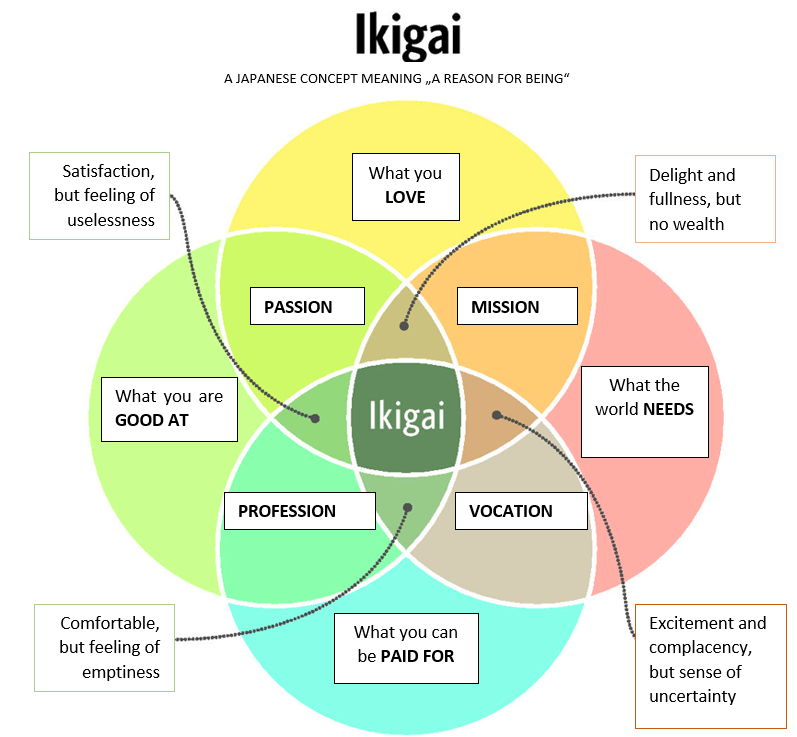
Figure 14 Ikigai concept in business. Source: Mogi, K., 2018.
These four factors of Ikigai can be applied to the business and help balance and align the focus of entrepreneurship. For each person, it is important to find answers to all these factors.
- What you're passionate about – for an individual – what do you love to do, for a company – what work motivates the organization's culture.
- What you're good at – sometimes to love doing something is not enough for a successful business, but the person needs to be also good at it.
- What the world needs – to be focused on what the world and the target market need is a crucial factor of success.
- What you can get paid for – if the facilitator can find something he or she loves, is good at it and people need it, but he/she is not able to charge enough money to cover the costs plus make a reasonable profit, the business is unsuccessful.
How to use the Ikigai concept practically is described more in the training materials that are accompanying this handbook. For the facilitators, it can be a very useful tool to clarify the goals of their business and focus directly on their “ikigai” – the perfect match of the personal skills, interests, and needs of the market. Moreover, facilitators need to be truly convinced about their mission and the ikigai helps to ensure their “good feelings” into the real strategic goals.
Business model canvas
The next step after a business idea formulation is to create a viable business model, which can succeed on the market. A practical and useful tool was created by Alexander Osterwalder and is called Business Model Canvas. It can be used for developing a new business, documenting an existing one, or its innovation. It is a simple visual strategic management template with elements describing a business's product's value proposition, infrastructure, customers, and finances.
The Canvas has nine elements:
|
Key partners |
Key activities |
Value propositions |
Customer relationships |
Customer segments |
|
|
Key resources |
Channels |
||||
|
Cost structure |
Revenue streams |
||||
Figure 15 Business Model Canvas. Source: Osterwalder and Pigneur, 2010.
Together these elements provide a coherent view of a business’s key drivers.
- Customer Segments: Who are the customers? What do they think? See? Feel? Do?
- Value Propositions: What’s compelling about the proposition? Why do customers buy, use?
- Channels: How are these propositions promoted, sold, and delivered? Why? Is it working?
- Customer Relationships: How do you interact with the customers through their ‘journey’?
- Revenue Streams: How does the business earn revenue from the value propositions?
- Key Activities: What uniquely strategic things does the business do to deliver its proposition?
- Key Resources: What unique strategic assets must the business have to compete?
- Key Partnerships: What can the company not do so it can focus on its Key Activities?
Cost Structure: What are the business’ major cost drivers? How are they linked to revenue?
The Canvas is popular with entrepreneurs for the business model design and innovation. It allows an excellent focus on what is important and in comparison, with the traditional long business plan it is also very easy to capture the value proposition. It is also more flexible to change the business model canvas and the updates are easily explainable.
Value proposition canvas
The Value Proposition Canvas is a tool, which can help ensure that a product or service is positioned around what the customer values and needs. It was initially developed also by Dr. Alexander Osterwalder as a framework to ensure that there is a fit between the product and the market. This canvas enriches the Business Model Canvas and helps to have a detailed look at the relationship between the customer segments and the value propositions. It helps to precisely define customer profiles and identify the customer’s major jobs-to-be-done, the pains they face when trying to accomplish their jobs-to-be-done, and the gains they perceive by getting their jobs done. The Value Proposition Canvas also visualizes the value that you create, defines the most important components of your offering, how you relieve pain and create gains for your customers. The most valuable output of this canvas is the achievement of the Product-Market fit which is adjusted based on the insights you gained from customer evidence and achieve Product-Market fit.
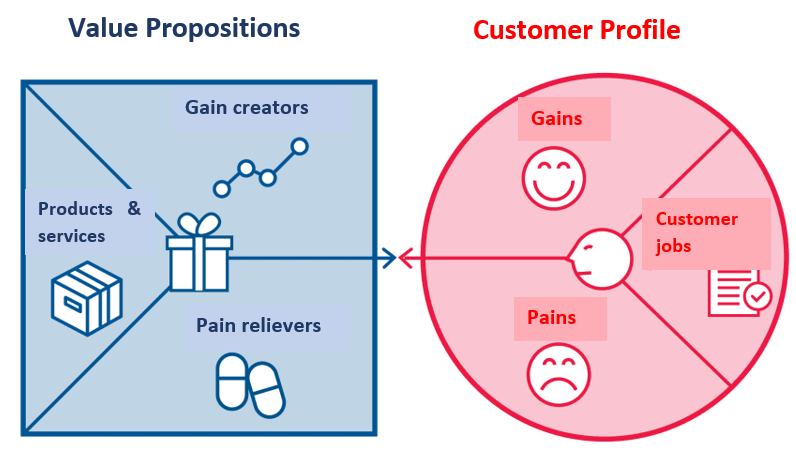
Figure 16 Value proposition Canvas. Source: Osterwalder, et al., 2014.
Customer Profile
- Gains – the benefits, which the customer expects and needs, what would delight customers, and the things which may increase the likelihood of adopting a value proposition.
- Pains – the negative experiences, emotions, and risks that the customer experiences in the process of getting the job done.
- Customer jobs – the functional, social, and emotional tasks customers are trying to perform, problems they are trying to solve, and needs they wish to satisfy.
A customer profile should be created for each customer segment, as each segment has distinct gains, pains, and jobs
Value Map – Value proposition
- Gain creators – how a product or a service creates customer gains and how it offers added value to a customer.
- Pain relievers – a description of exactly how a product or a service alleviates customer pains.
- Products and services – the products and services which create gain and relieve pain, and which underpin the creation of value for the customer.
Achieving fit between the value proposition and customer profile
After listing gain creators, pain relievers, and products and services, each point identified can be ranked from, a nice to have, to essential in terms of value to a customer. A fit is achieved when the products and services offered as a part of the value proposition address the most significant pains and gains from the customer profile.
Identifying the value proposition on a paper is only the first stage. It is then necessary to validate what is important to customers and get their feedback on the value proposition. These insights can then be used to go back and continually refine the proposition.
Business plan in nutshell
Although a business model canvas can give you an exact idea of how to form a business, it is still very important to form all findings into a business plan. The business plan is an exact recipe for how to create a business step by step. Also, it is a necessary part of some funding requests. The correct business plan should contain:
- Executive summary - a snapshot of your business
- Company description - describes what you do
- Market analysis - research on your industry, market, and competitors
- Organization and management – your business and management structure
- Service or product – description of your main activity
- Funding request – how many sources you would need from external partners
- Financial projections – the financial story of your business
- Appendix – documents and other supportive materials
A good business plan guides you through each stage of starting and managing your business. You’ll use your business plan as a roadmap for how to structure, run, and grow your new business. It’s a way to think through the key elements of your business. For rural facilitators, the need of creating the business plan might appear the moment they are taking a loan from the bank, applying for subsidies, or a development grant. Facilitators may help farmers who want to change their production and sale strategy. E.g.: Milk producers desire to start direct selling instead of sell to milk collectors, in this case, facilitators may help in the decision by overviewing the strategy step-by-step. The Canvas might provide a deeper preview of how new chains (farmers’ market, milk/cheese automat, on-farm sale, farmers’ shop) can open new doors for new consumers and which steps (investments) are needed to achieve the purchasing of a new model.
Business plans can help you get funding or bring on new business partners. Investors want to feel confident they’ll see a return on their investment. Your business plan is the tool you’ll use to convince people that working with you — or investing in your company — is a smart choice.
CONCLUSION
Business-oriented thinking is an important skill of every entrepreneur that wants to be successful in the market. It is highly recommended to use some of the strategic analysis to know what is going on in the market and adapt the business plan according to the situation in the external and internal environment. For setting up the new position – rural facilitator – the given person needs to know his or her skills and adjust the original business idea to the given situation. With that, the ikigai concept and the business model canvas can help. This chapter offers a theoretical background also for the creation of the business plan and demonstrates the usage of the business model canvas on a real farm example.
RESOURCES
https://www.strategyzer.com/canvas/business-model-canvas
https://www.strategyzer.com/canvas/value-proposition-canvas
(free download of the business model canvas and value proposition canvas)
https://www.swotanalysis.com/13474/Ikigai-Reason-for-Being
(online template for ikigai)
https://www.startuploans.co.uk/business-plan-template/
https://www.sba.gov/business-guide/plan-your-business/write-your-business-plan
(business plan description, template and examples)
Chapters
- Introduction
- Rural Facilitator
- Innovative short food supply chains
- Short food supply chain and ecological transition
- Business thinking for Rural Facilitators
- Marketing tips in short food supply chains
- Communication and conflict management for Rural Facilitators
- Leadership Skills
- Glossary
- References
- Authors and their organizations





